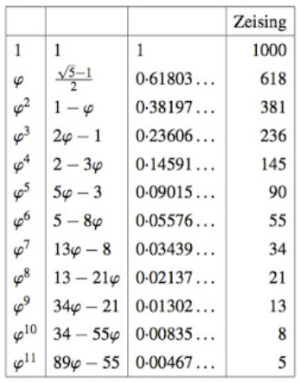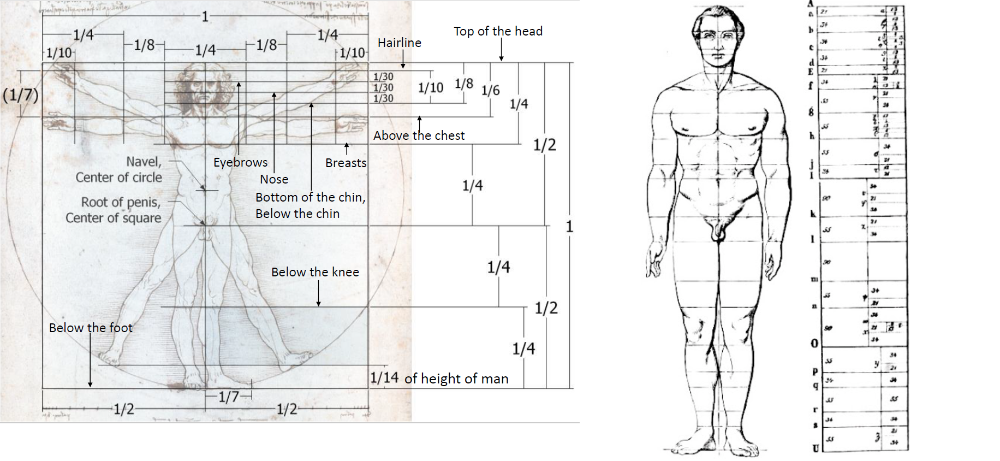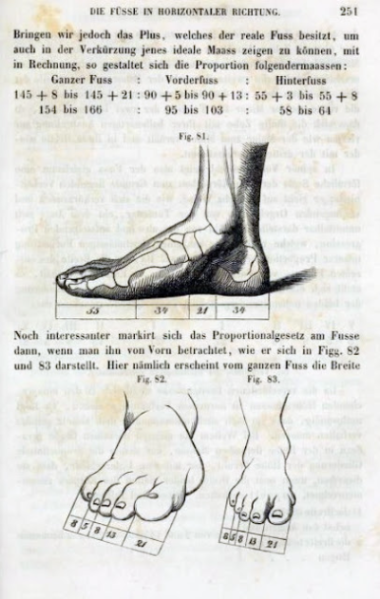Vitruvius versus Zeising
exit the Vitruvius-man, enter the Zeising-man
I repeat once again the title of Zeising's book:
'New doctrine on the proportions of the human body, developed from a porphological basic law unknown unto now that penetrates the proportions of the whole nature and art.'.
For Zeising this basic law is the division according to the golden ratio. As Vitrivius he starts from an ideal human body as represented in Greek statues. BothVitruvius and Zeising take the length of and adult man as a unit. All lengths in the human body are expressed in function of this unit. MaarBut both are counting in a different way.
- Vitruvius sees unit fractions in all proportions.
- Zeising devides the length using the golden ratio, coinciding with the navel. In a second step he divides both parts in the same way and so on. As growing powers of 0.618 are getting smaller, you can keep up dividing. Since φ2=1- φ you can write all powers of φ as a+bφ (see the table). Zeising expresses all distances in thousands of the height. So the lenght of an adult man is 1000 units.

Below you can see both drawings. In Zeising's drawing all measures are written on the right. You can see they're decreasing upward.


far from an 'innocent eye' and 'mind'
Zeising gives an increadible detailed description of the proportion of the parts of the human body, all determined by the GR. It takes him 150 pages, not really with an innocent eye or an innocent mind.
It's important that Zeising starts from an ideal body and not from empiric research. He is dealing in a typical way with differences in gender, age and race. For him they are 'opposites that unite into the ideal.'
- According to Zeising man and woman are divisions from the original human and "both genders have specialised. Man realised the ideal shape in the upper body, the woman in the lower body".
- He joins Petrus Camper (1722-1789), who compares skulls of 'orang oetan, n. and European' with the ear opening as reference between lower and upper part. From 1 : 1 to 18 : 11 it's no surprise that he's concluding "in its corrections nature finally ends up with the European and 18 : 11", approximating the GR." Additional remark: 18 : 11 = 1.636
on beauty and the role of Zeising
Surprisingly Zeising concludes that formal beauty isn't the sama as beauty as such. Esthetical beauty doesn't lie in formal beauty but in character. So who tries to use Zeising to put forward the GR as an esthetic ideal is coming home from a bare journey.
In fact the importance in thinking about the importance of the GR in esthetics and arts isn't the key content of his book. Zeising is and stays historically important because the idealization of the GR as a formal principle was picked up and repeated in numerous publications after him, becoming a generally accepted narrative.